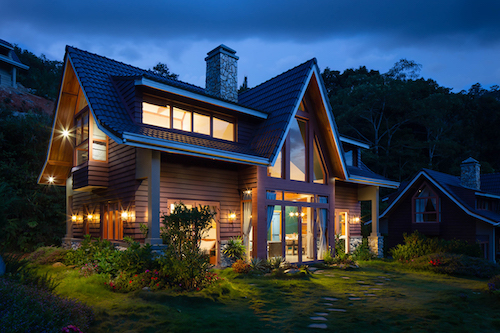Although residential projects are smaller scale when compared to most commercial builds, they are no less challenging, and still require high-quality materials and craftsmanship. This is especially true regarding exterior finishing. Because the function of an external wall is to protect the building from exposure to the elements and other damages, the engineering of exterior finishes directly informs a house’s structural integrity. Truly, an exterior finish is only as good as its materials. To learn more about exterior finishes on houses, explore ClarkDietrich’s guide to exterior wall materials for finishing below.

What Materials Can Be Used for an Exterior Wall?
The building materials used to construct any exterior wall support the overall build quality of a home. Using high-quality and innovative exterior finishing materials helps prevent moisture intrusion, stress fractures, and many more damages to a building.
Here are a few of the most important exterior finishing materials and their functionalities:
- Metal lath provides a foundation for plaster application. In general, metal lath creates a composite cladding, which helps the cladding system to resist forces that induce stress cracks within the plaster. If you are interested in learning more about lath embedment best practices, read our white paper.
- Corner beads reinforce critical junctures and are placed on each exterior stucco corner.
- Casing beads terminate plaster or stucco against dissimilar materials. These beads are placed along the sides of all fenestrations.
- Starter strips for exterior walls offer perimeter base support for Exterior Insulation and Finish Systems (EIFS). These strips secure the initial pieces of siding and are located at the bottom of each partition.
- Weep and sill screeds provide a drainage plane to draw moisture away from the wall. Typically, these weep holes are located at the rear of the trim on the base of the wall.
- Control joints are engineered to reduce stress on exterior walls, which minimizes the risk of cracking. Control joints enable additional longitudinal movement and are placed at junctures that are likely to experience high levels of stress.
- Expansion joints are designed to mitigate structural movement, which minimizes the risk of damage to the exterior and interior walls. These joints anticipate the natural shrinkage of a building and offer flexibility so the building can withstand additional movement.
- Reveals create architectural breaks in walls, which fosters a strengthened bond between each juncture and limits the risk of separation.
- Rainscreens are made to improve ventilation, thermal control, and drainage within a wall. They draw moisture away from a cladding system to stop moisture penetration and prevent damage.
What Are the Layers of an Outside Wall?
There are five layers that make up the composition of an exterior wall system.
1. Exterior cladding or siding is the material attached to the exterior wall of a building. There are various cladding/siding materials available in today’s market. Most are selected based on their durability and stylistic characteristics.
2. Drainage planes or water-resistive barriers are the materials used inside a wall to repel moisture intrusion and are engineered to drain water.
3. Air barrier systems control the airflow within a wall. This enables HVAC systems to perform efficiently and helps regulate the building’s air quality.
4. Vapor retarders are damp-proofing materials that repel water vapor and prevent it from seeping through walls.
5. Insulating elements are a crucial component of a building’s thermal envelope. These elements work to prevent moisture, energy, and heat transfer.
What Is the Most Durable House Exterior?
Brick and stone siding are widely regarded as the most durable options available on the market. However, both options are rather costly. Therefore, many homes are made with similarly durable—but less costly—materials such as:
- Composite siding
- Fiber cement
- Stucco
What Is the Cheapest Exterior Finish on a House?
Vinyl is the most affordable option for exterior siding and comes in a variety of styles. Its low cost and versatility make it a popular siding choice for many homes. Although not as durable as other siding options, vinyl can last quite a while—so long as proper installation protocols are followed, and routine maintenance is conducted.
Preventing Cracking and Moisture Intrusion
Regardless of how durable siding is, cracking and moisture intrusion issues can occur. One main contributing factor to increased cracking in cement plaster is minimal embedment of the lath. Concerning moisture intrusion, water vapor can infiltrate through gaps in the wall system, reach the back of panels, and cause lasting damage to a wall system.
Because builders cannot see through exterior wall cladding, issues that could lead to increased moisture intrusion and stress cracks are easy to miss—especially if the exterior finishing materials used are low-quality. Additionally, many conventional external finishing methodologies and materials require expert hands. Therefore, mistakes will likely be made when skilled veteran laborers are hard to source.
To remedy these challenges, specifying new and improved products can help streamline processes and make it simpler for novice installers to successfully complete a job. For example, ClarkDietrich’s Easy Embedment System™ (EES) was created to simplify the stucco application process, and offer new contractors easy-to-use tools to quickly and accurately complete expert-level installations without additional training or supervision.
Ultimately, using improved products will prevent callbacks and enable novice workers to produce efficient and effective work. To learn more about how ClarkDietrich’s innovations can help you, explore our resources.